The Curse of Tenerife: The crash of Dan-Air flight 1008
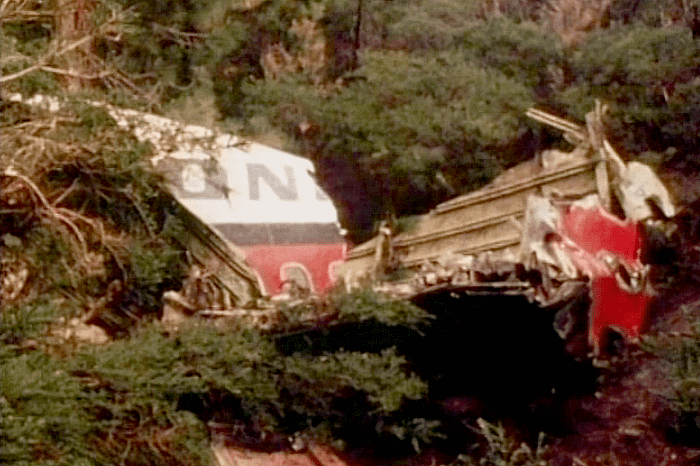
On the 25th of April 1980, a Boeing 727 carrying British tourists to Tenerife in the Canary Islands flew off course in fog and slammed into the side of La Esperanza, killing all 146 passengers and crew. The setting for the disaster was familiar for all the wrong reasons: just three years earlier, the very same airport on this tiny Atlantic island had played host to the deadliest aircraft accident in history. The curse of Tenerife, which had already claimed so many lives, had struck again. But in trying to piece together why the crew of Dan-Air flight 1008 found themselves on a collision course with a mountain, facing dire warnings but unsure which way to turn, Spanish and British investigators came to a deadlock. Was the air traffic controller’s imprecise language the cause, or did ultimate responsibility for avoiding terrain still lie with the pilots? The arguments hinged on a single letter in a single word — one word that changed absolutely everything about the situation. But this confusion, much like Tenerife’s infamous fog, obscured the real problem: a system which was so deficient that the absence of a single letter could lead to disaster.
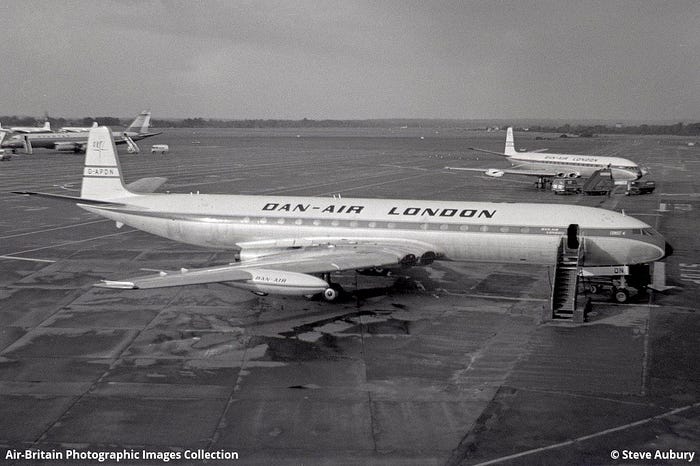
In Europe, the tourism industry has long relied on package deals called “inclusive tours,” where holidaymakers buy the plane ride, the hotel stays, and the scheduled activities in a single package from a tour operator. Many airlines over the years have carved out a niche by providing charter flights to inclusive tour operators; other such airlines were founded by the tour operators themselves to reduce costs. While the latter type, such as TUI, dominates the industry today, in the 1970s and 1980s British airline Dan-Air rose to become the largest independent airline in the United Kingdom by doing the former — along with a laundry list of other activities that few other airlines would consider.
Dan-Air was a true jack-of-all-trades. Between its founding in 1953 and its absorption into British Airways in 1992, it carried out a wide range of services, including but not limited to inclusive tour charters, regular charters, scheduled passenger flights, scheduled cargo flights, chartered cargo flights, flights carrying migrant workers, Royal Mail flights, and oil field support flights. If it was possible to make money by conducting a flight, Dan-Air did it. Dan-Air even branched out into continental Europe with a second hub in West Berlin, from which it carried out charter flights for German tour operators and even scheduled domestic passenger flights within West Germany.
Dan-Air’s fleet was equally diverse. The airline developed a strategy of buying extremely cheap second-hand airplanes of a wide range of sometimes unusual types. Early in its period of expansion, Dan-Air managed to acquire a large fleet of de Havilland Comet 4s, the only successful version of the world’s first ever jet airliner, and continued to operate them until 1980. The rest of the airline’s core fleet consisted of equally large numbers of BAC One-Elevens, Hawker Siddeley HS 748 turboprops, and Boeing 727s. Dan-Air was the first British operator to fly the 727, which in its factory layout did not meet British safety standards, forcing Dan-Air make a number of unique modifications, such as an extra emergency exit door on each side. Its Berlin-based 727s were modified even further with extra fuel tanks inside the fuselage to allow them to fly non-stop from Germany to the Canary Islands.
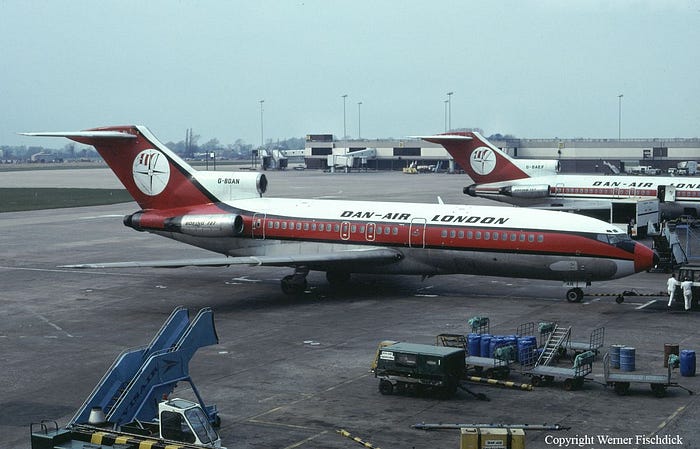
One of Dan-Air’s 727s was G-BDAN, which was scheduled to fly an inclusive tour charter flight from Manchester, England to Tenerife in the Canary Islands on the 25th of April, 1980. The 138 passengers were mostly British tourists who had bought a holiday package that would allow them to enjoy Tenerife’s pleasant beaches, spectacular mountains, and otherworldly volcanic landscapes. In command of the flight were three pilots: 50-year-old Captain Arthur “Red” Whelan, who had over 15,000 flight hours; 33-year-old First Officer Michael Firth, who had around 3,500 hours; and a 33-year-old Flight Engineer, Raymond Carey. A team of five flight attendants brought the total number of occupants to 146.
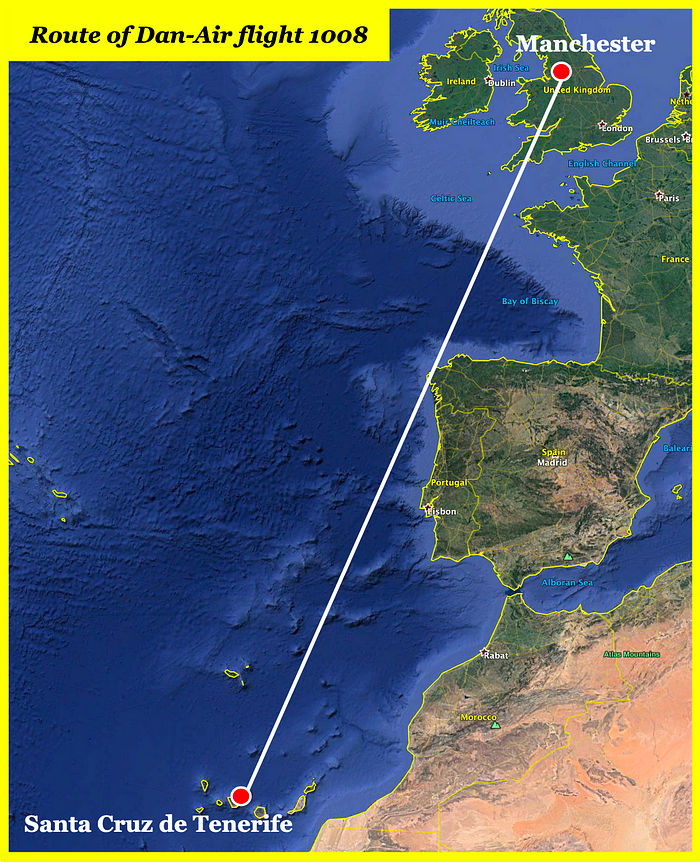
Their destination that afternoon was Tenerife North Airport, formerly known as Los Rodeos. This is a name that strikes fear into the hearts of aviators to this day. Los Rodeos Airport in March 1977 was the scene of the world’s deadliest aircraft accident, when two fully loaded Boeing 747s, both diverted from Gran Canaria, collided on the runway, killing 583 people. Fallout from the so-called Tenerife Disaster was still ongoing when Dan-Air flight 1008 took off from Manchester, bound for this same infamous airport.
One of the main factors that led to the Tenerife Disaster was the airport’s location. Situated on a saddle over 2000 feet (600 meters) above sea level, Tenerife North Airport tended to bear the brunt of the island’s unpredictable weather. Fog frequently formed around the high peaks at the island’s center and rolled over the airfield, which in 1977 created the conditions which prevented the two 747s from seeing each other until it was too late. That same fog was back on the 25th of April 1980, shrouding the mountain peaks in a cloud layer so dense that meteorological stations at higher elevations reported a visibility of zero.
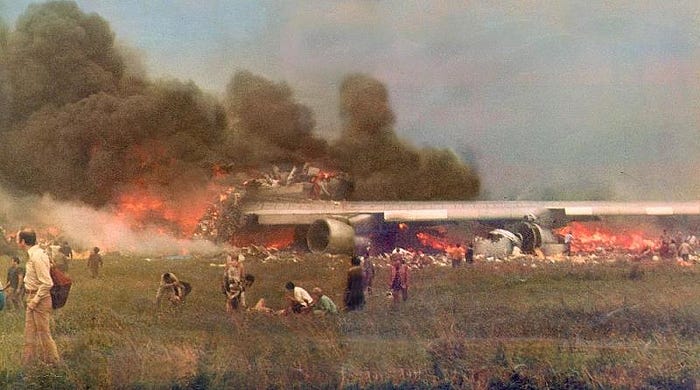
At Tenerife, the prevailing winds blow in from the west, out of the vastness of the Atlantic Ocean. But today, they were blowing the opposite way, from the east, forcing incoming planes to land on the rarely used runway 12 instead of the usual runway 30. Captain Whelan had flown to Tenerife North Airport 58 times, but he had never once landed on runway 12.
The regular procedure for landing on runway 12 was to fly to the Tenerife North VOR, a VHF radio beacon northeast of the airport. From this beacon (known as TFN), planes would turn toward another beacon called a locator, designated FP, situated just west of the runway threshold. They would then proceed directly away from the airport in line with the runway, turn around over the ocean, and reverse course to land.
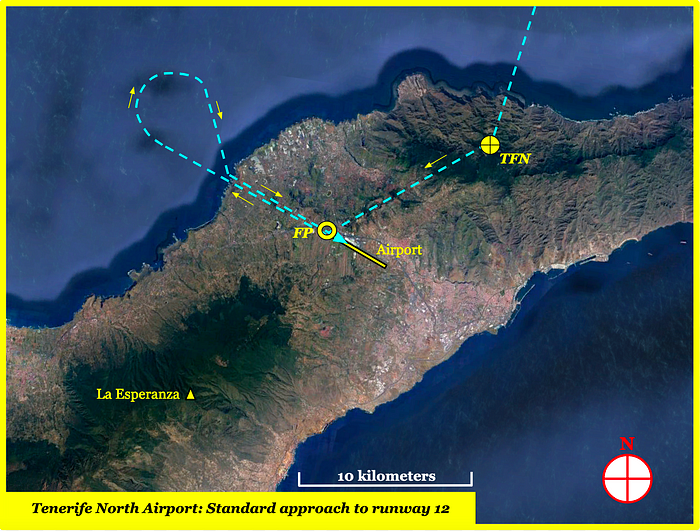
However, Dan-Air flight 1008 was not the only plane approaching runway 12 that day. As flight 1008 neared the TFN VOR at around 1:15 p.m., they found themselves behind Iberia flight 711, a slower turboprop operated by Spain’s national airline. The 727 was flying considerably faster than normal for this part of the approach, and at the rate they were going they would overtake the slower plane from behind well before reaching the runway. But by the time flight 1008 passed TFN at 1:18, the controller had yet to catch on to the developing problem. “Dan-Air one zero zero eight, cleared to the Foxtrot Papa beacon via Tango Foxtrot November, flight level one one zero, expect runway one two, no delay,” he said to the crew, unaware that his promise of “no delay” would soon be broken.
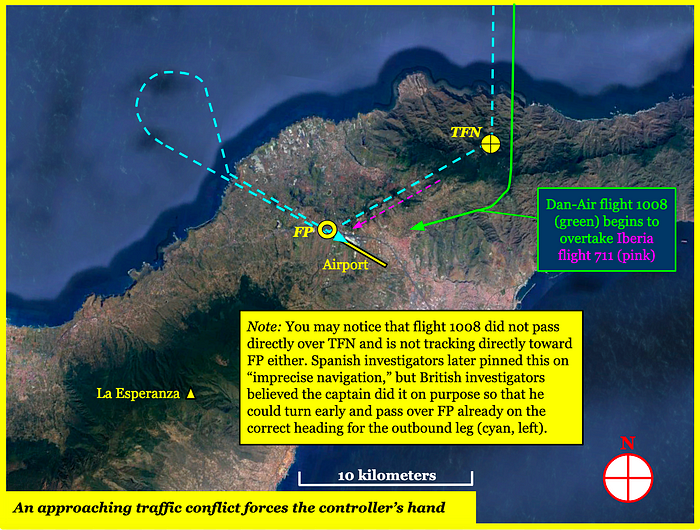
The controller on duty at Tenerife North that day was 34-year-old Justo Camin, who had been working at the airport for just over a year — not long enough to remember the Tenerife Disaster, but long enough to be familiar with the particular difficulties of working air traffic on the island. In 1980, as in 1977, the airport lacked any sort of radar, and the only way he could know where the planes were was by listening to reports from pilots and writing down their progress on strips of paper. On top of this, he was doubtlessly having a bad day, as he had just learned that his mother had terminal cancer.
When First Officer Firth reported that flight 1008 had passed TFN, Camin was caught by surprise, as he did not expect them to reach the beacon so quickly. Realizing that flight 1008 was getting too close to the Iberia turboprop, he decided to put them into a holding pattern to give the slower plane time to get out of the way. The problem was that all of the officially designated holding patterns were rather inconvenient. The closest one to flight 1008 was based around the TFN VOR, which was now behind them. All the others were designed for planes approaching runway 30; no holding patterns had been drafted for the runway 12 approach because it was used so rarely. With flight 1008 already rapidly closing in on the FP locator beacon, he resolved to make up a new holding pattern on the spot.
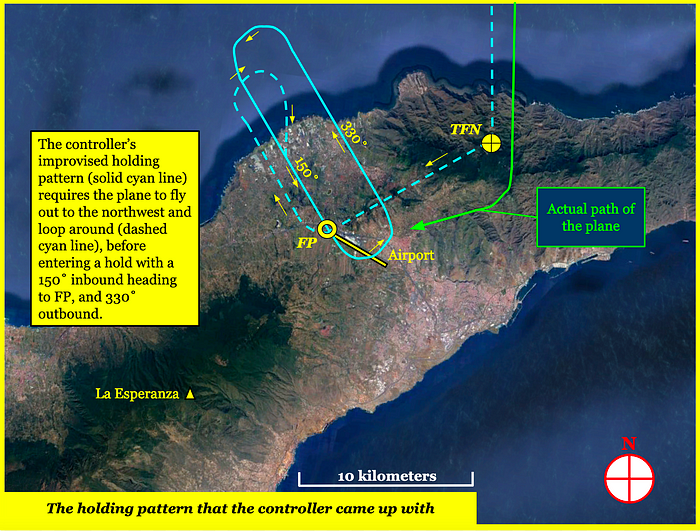
The holding pattern that Camin came up with was based around FP. He wanted flight 1008 to fly over FP, turn northwest headed out over the sea, then make a 180-degree turn back to FP on a heading of 150 degrees. The flight would then enter a left-hand holding pattern with the inbound leg on a heading of 150 and the outbound leg on a heading of 330. They would remain in this holding pattern until Iberia flight 711 was out of the way, while the direction of the hold would ensure they were in position to land quickly as soon as the airspace was clear.
In response to First Officer Firth’s position report, Camin said, “Roger, the er, standard holding pattern overhead Foxtrot Papa is inbound heading one five zero, turn to the left, call you back shortly.”
Here he made a tiny error that directly led to all the events which followed. When he said “turn to the left,” he actually meant to say “turns to the left,” describing the direction in which the crew were to fly around the holding pattern. But without the “s,” this transmission sounded to the crew like an imperative: “turn to the left.”
“Roger, Dan-Air one zero zero eight,” said Firth.
“Inbound one five zero to your left,” Captain Whelan repeated.
“One five zero left, yeah,” said Firth.
From the position that the crew were in at that moment, the controller’s instruction made little sense. To fly inbound to FP on a heading of 150 degrees, they would need to make a hard turn to the right, fly past FP, then do a one-eighty and come back at it from the other side, but the controller didn’t mention any of this. Unsure what the controller intended spatially, both Captain Whelan and First Officer Firth latched on to the apparent order to “turn to the left” and concluded that the controller definitely wanted them to turn left onto a heading of 150 degrees upon reaching FP, and they would sort the rest out later.
This was in fact the opposite of what Camin had intended, and would result in them flying outbound from FP on 150 instead of inbound to it, but neither pilot had realized this yet. Nevertheless, something felt off about the holding pattern.
“That’s an odd sort of one,” said Whelan. “The runway…” Three seconds later, he added “One to go,” reporting that they were 1,000 feet above their assigned altitude of 6,000. Both other crewmembers acknowledged.
“No I’m not — er, I suppose it’s alright,” said First Officer Firth. He was quite probably looking at their charts and was in the process of discovering that this holding pattern wasn’t оn any of them.
“I’ll just turn straight round left onto one five zero when I go overhead then,” said Whelan.
“Yes.”
“The only thing is, we’re um… we’re just about to miss it haha, it’s too close,” Whelan added. At the speed they were going, they would pass over FP within seconds, and there wasn’t much time to make the turn onto the 150 degree radial.
As First Officer Firth worked to set up his instruments to track the navigational aids they would use in the hold, flight 1008 passed abeam FP at a distance of about two kilometers. “Dan-Air one zero zero eight is (at) the Foxtrot Papa, level at six zero, taking up the hold,” he reported.
But despite his first officer’s radio call, Captain Whelan didn’t actually turn left to enter what he thought was the hold until 20 seconds later.
“Bloody strange hold, isn’t it?” Firth asked.
“Yes, it doesn’t — isn’t parallel with the runway or anything,” said Whelan. But despite their confusion, neither pilot asked the controller for clarification.
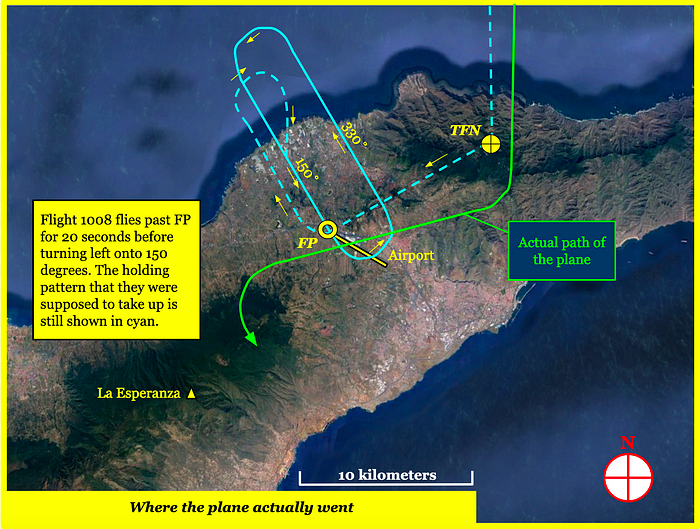
Meanwhile, the crew of Iberia flight 711 reported (in Spanish) that they had entered the procedure turn on approach to runway 12. In response, controller Justo Camin authorized them to descend from 5,000 feet. This allowed him to move the Dan-Air flight, which he thought was in the assigned holding pattern, down to the level the Iberia plane had just vacated. Flight 1008 immediately commenced a descent from 6,000 to 5,000 feet — below the height of La Esperanza, a fog-shrouded mountain just a short distance to the right of the plane.
At this point, still in the process of turning left onto 150 degrees, Captain Whelan suddenly exclaimed, “Hey, did he say it was one five zero inbound?”
“Inbound, yeah,” said First Officer Firth.
“That’s… I don’t like that,” Whelan said. One can almost imagine the gears grinding inside his head. If the controller had said “150 inbound,” that meant he was supposed to fly toward FP on that heading, not away from it.
“They want us to keep going more round don’t they?” Firth asked.
At that moment, the plane passed over the northeast corner of La Esperanza, and the closure rate with the ground became high enough to set off the ground proximity warning system. A harsh alarm began to call out, “TERRAIN! TERRAIN! WHOOP WHOOP, PULL UP!”
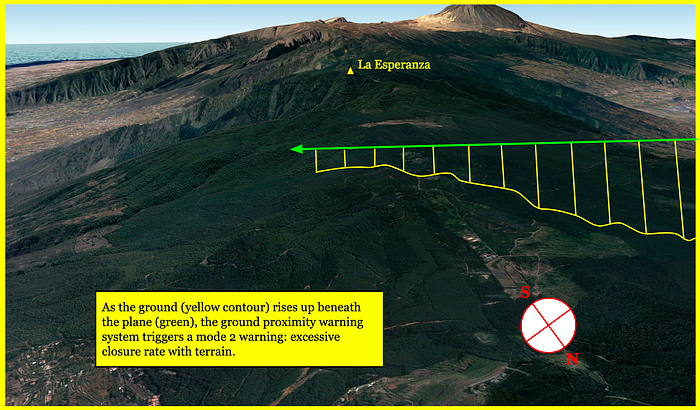
Captain Whelan didn’t hesitate to react to the warning. “Okay, overshoot,” he ordered. “He’s taking us around to the high ground!” Believing that the sudden activation of the warning meant that his left turn was taking them towards the mountain, he initiated a turn to the right. After ten seconds, the warning ceased — but not because they were out of danger. In fact, they were turning directly toward the summit of La Esperanza, but the airplane’s sudden passage over a valley had convinced the primitive ground proximity warning system that their closure rate with the ground was no longer abnormal.
When a pilot hears a ground proximity warning, the first thing they should do is pull up and accelerate to achieve the maximum possible rate of climb. But, believing that he could avoid the terrain by turning right, Captain Whelan neglected to do this.
Looking at his chart, First Officer Firth might have realized that this was the wrong course of action. “I suggest a heading of one two two actually, and er, take us through the overshoot, ah…” he said.
“Let’s get out of here,” said Flight Engineer Carey, succinctly expressing the thoughts of everyone in the cockpit.
“He’s taking us around to the high ground,” Whelan repeated.
“Yeah,” said Firth.
But instead of listening to his first officer’s suggestion, Captain Whelan continued to steer the plane steeply to the right, losing 300 feet of altitude in the process.
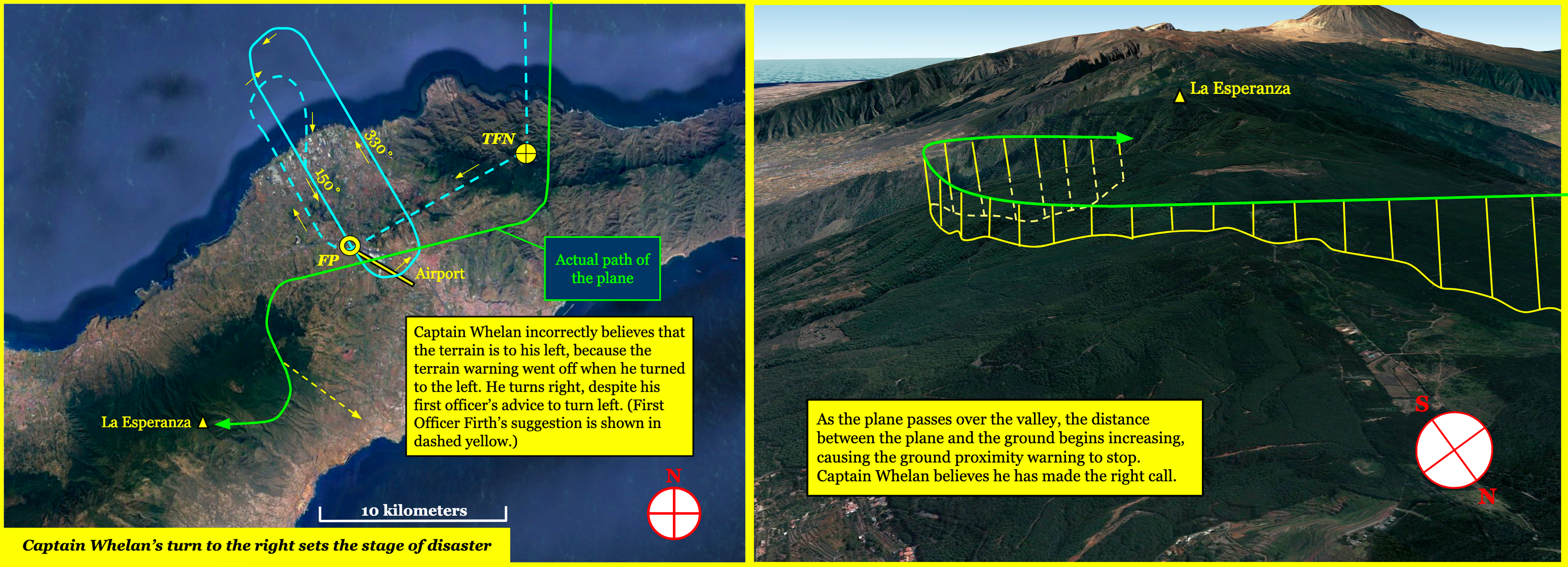
Seeking clarification from air traffic control, Firth keyed his mic and asked, “Er, Dan-Air one zero zero eight, we’ve had a ground proximity warning.”
“Bank angle, bank angle!” warned Flight Engineer Carey. And then all went quiet.
Two seconds after Firth’s transmission to ATC, Dan-Air flight 1008 slammed headlong into the side of La Esperanza at an altitude of 5,450 feet, just 92 feet (28 meters) below the summit. The impact obliterated most of the plane instantaneously, sending shattered debris streaking across the mountainside in every direction. The tail section continued onward for several hundred meters past the point of impact, before it too slammed against the ground, plummeted into a ravine, and broke apart. A thousand tiny fires erupted from the pulverized wreckage, gleaming dully amid the fog-shrouded pines.
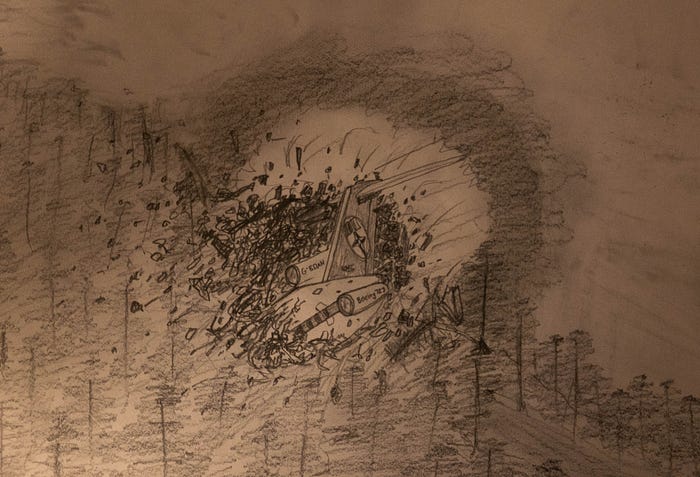
Initially, controller Camin was unaware that the plane had crashed. But when he tried to call the plane to follow up on their worrying final transmission, he received no response. All further inquiries to the British airliner went unanswered. For the second time in just over three years, the dreaded crash alarm sounded at Tenerife North Airport — but this time, no one was sure where to look for the plane.
Although no one directly witnessed the impact, signs of a plane crash soon became apparent to people on and around the upper slopes of La Esperanza. Light debris, such as travel brochures and documents, rained down on the village of Las Lagunetas, about two kilometers downwind of the crash site. Meanwhile, several chunks of the airplane had been propelled up the slope with such force that they tumbled over the top of the mountain and down the other side, coming to rest on both sides of the main road between Santa Cruz de Tenerife and the Teide National Park. Motorists on the road realized the significance of the wreckage when an announcement about the missing plane broke into local radio broadcasts. Within hours, rescuers made the trek up the mountain to the wreckage site, but it was immediately obvious that none of the 146 people on board had survived the crash. Over the following days, recovery teams could not find a single complete human body, and the remains of many of the occupants were never conclusively identified.
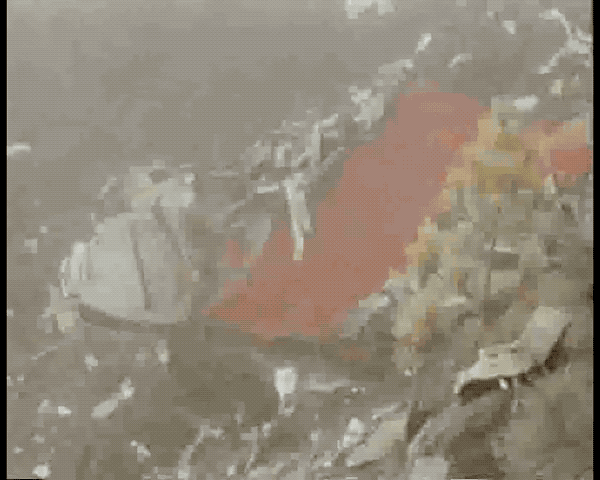
Meanwhile, investigators from both Spain and Great Britain recovered the black boxes and began unraveling the cause of the crash. The sequence of events leading to the accident began with the high speed of the Dan-Air 727, which caused it to catch up to the plane ahead of it much faster than the controller expected. The controller did not realize that separation between the two aircraft would be a problem until after flight 1008 had already passed the published holding pattern around the TFN VOR. He therefore devised an informal holding pattern around FP with legs on 150 and 330 degrees and communicated this to the crew. But instead of turning right and entering the holding pattern, the crew turned left, straying into an area where the minimum safe altitude according to their charts was 14,500 feet. After receiving a ground proximity warning, the captain decided to conduct an evasive turn to the right, which actually took them straight into the side of the mountain. It seemed that the crew had become hopelessly confused about their location. How could this have happened?
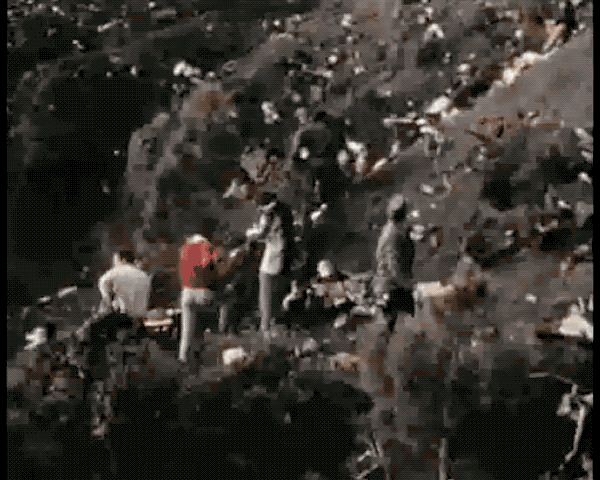
Investigators from both countries agreed that the confusion began when the controller said, “the standard holding pattern overhead Foxtrot Papa is inbound heading one five zero, turn to the left.” Clearly he had intended to say “turns to the left,” and by leaving off a single “S,” he had changed this to an apparent order to turn to the left. However, Spanish investigators argued that it was the pilots’ responsibility to read back the transmission so the controller could check that they understood it correctly — something they failed to do. British investigators felt that this was unfair to the pilots, because the transmission was worded so poorly. From the position they were in, the controller’s desired holding pattern was difficult to understand spatially, and the grammatical error compounded the problem to make the instructions nigh unintelligible. Although they should have asked for clarification, it was easy to understand how the pilots became confused.
Having heard “turn to the left,” Whelan and Firth clearly latched onto this element and subconsciously weighed it above the word “inbound.” These two parts of the instruction — “inbound heading 150” and “turn to the left” — were contradictory, and in such a situation it is human nature to pick up the parts that make sense and ignore the ones which don’t. Consequently, the crew turned to the left onto a heading of 150 degrees, and only later realized that the controller had said “inbound” to FP, while they were heading outbound from FP. Subsequently, the controller, who had no radar with which to track the plane, cleared them to descend below the height of the mountain without realizing they were off course.
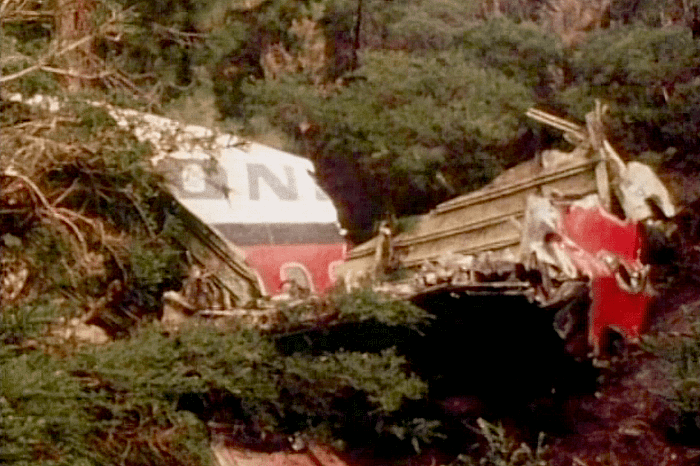
The controller’s decision to clear flight 1008 to descend to 5,000 feet became another point of contention. In the British investigators’ opinion, the problem was that 5,000 feet was not a reasonable altitude for the holding pattern the controller had devised. Had the holding pattern been designed according to official regulations, the minimum altitude should have been 7,000 feet. On the other hand, the pilots had no reason to believe this holding pattern wasn’t official, despite it not appearing on their charts, because the controller had called it the “standard hold.” They would therefore have been unlikely to question their assigned altitude of 5,000 feet. Although flight 1008 never actually entered the holding pattern, this discrepancy was critical to the sequence of events, because if the plane had not descended toward 5,000 feet, it would not have collided with the mountain. The Spanish investigators objected to this reasoning, noting that if the plane had been where the controller thought it was, an assigned altitude of 5,000 feet would have been reasonable.
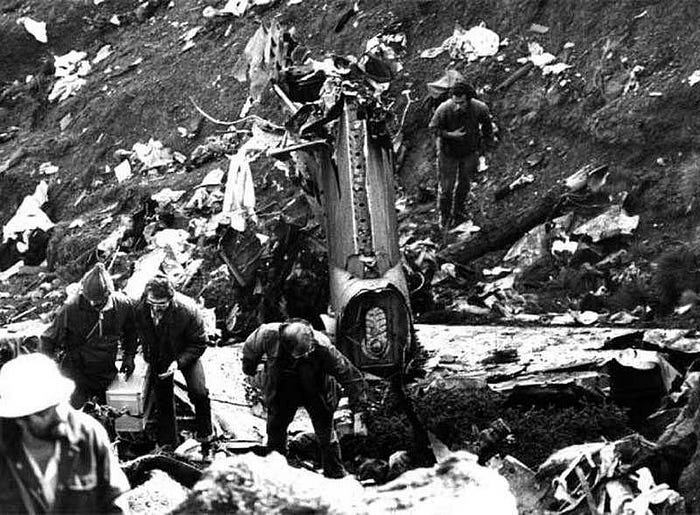
The next link in the chain of events was Captain Whelan’s decision to turn to the right upon receiving a ground proximity warning. Having been quite busy flying the plane for the last several minutes, he probably did not look at his charts, causing him to slowly lose track of their exact position. When he said “He’s bringing us around to the high terrain,” he might have thought he was northwest of La Esperanza, as indicated in the diagram below, rather than northeast. Due to the small scale of the island, this was not far from his actual location, but it put the mountain in a completely different position relative to the plane. Convinced that turning right would solve the problem, he ignored his first officer (who probably had been tracking their position and knew more or less where they were) when he suggested that they turn left to a heading of 122 degrees instead. Had Whelan not turned to the right, the crash would not have occurred.
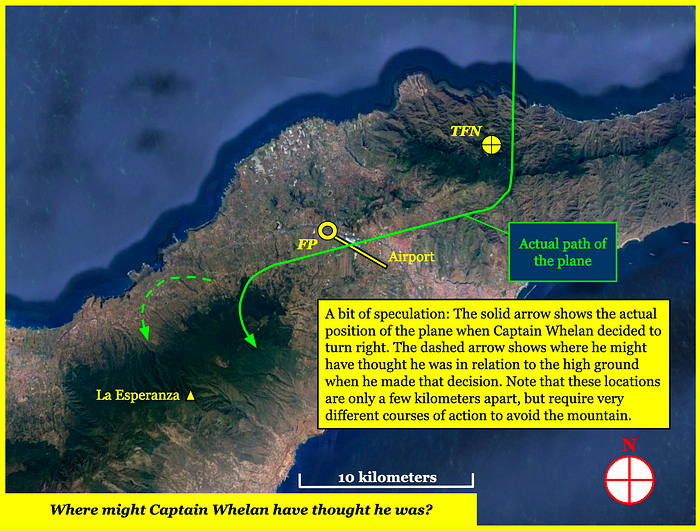
Even then, an accident was still not inevitable. If Whelan had initiated an escape maneuver by accelerating to go-around power and pulling up to climb, the plane would have cleared the summit of the mountain. Instead, by trying to turn sharply to the right, they lost 300 feet of altitude — more than enough by itself to make the difference between a near miss and a fatal disaster. Indeed, had the pilots reacted to the ground proximity warning by doing nothing at all, they would have passed over the shoulder of the mountain and continued safely out toward the ocean. To ensure that others wouldn’t make the same mistake in the future, in the wake of the accident the US FAA began requiring airlines to teach their pilots to climb immediately upon receiving a GPWS alert, unless the ground is clearly visible.
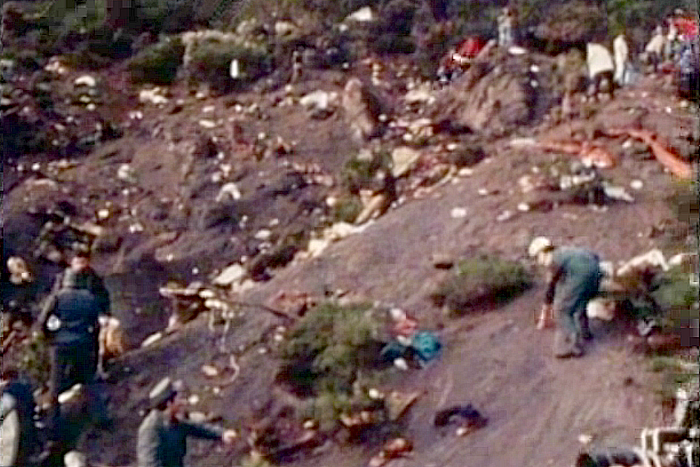
At this point the investigation devolved into an ill-tempered spat between Britain and Spain over whether more blame ought to be placed on the pilots or on the controller. The Spanish report effectively absolved the controller of any wrongdoing, while the British investigators wanted the controller’s confusing instructions and use of an unapproved holding pattern elevated to the probable cause alongside the pilots’ failure to ask for clarification and their incorrect reaction to the terrain warnings. The Spanish investigators took a purely legalistic view of the matter: in a non-radar environment, it was the responsibility of the pilots to ensure that they adhered to all minimum altitudes indicated on their chart. Since they flew into an area where the minimum safe altitude was 14,500 feet while descending from 6,000 feet, they were entirely at fault in the crash. While technically true based on the most narrow interpretation of fault, Britain’s Air Accidents Investigation Branch and the families of the victims felt that this was unreasonable, and the head of the British delegation publicly called the Spanish report a “whitewash.”
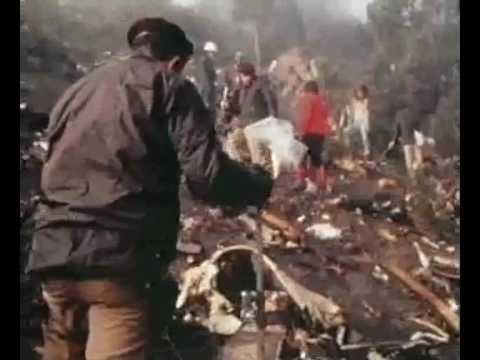
While both sides squabbled over whether the pilots or the controller ought to be blamed, too little attention was devoted to the elephant in the room: poor infrastructure. Spanish aviation authorities had not created a holding pattern for planes approaching runway 12. Tenerife North Airport had no radar, despite the inquiry into the 1977 disaster recommending that it be installed. Neither runway had an instrument landing system, despite frequent cloud cover. A safe approach to this airport in instrument conditions required careful coordination between the pilots and the controller; there was no room for error. Without infrastructure like radar and designated procedures to fall back on, there was not necessarily anything to stop pilots from flying badly off course because the controller left a single letter out of an instruction.
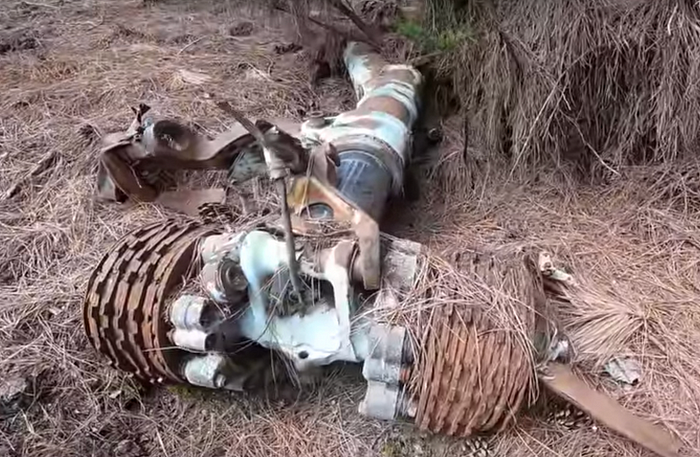
This combination of poor weather, missing infrastructure, and tricky procedures made island airports in southern Europe and the Atlantic a graveyard for airplanes. The Dan-Air crash was the third major disaster to occur at Tenerife North Airport in less than eight years. Crashes in and around the airport had claimed 952 lives since its opening in 1956. Other islands suffered similarly. In 1977, 131 people died when a 727 ran off a dangerously short and sloping runway on the Portuguese island of Madeira; one month later, a Swiss jet crashed at the same airport, killing 36. One year after the Dan-Air crash, a very similar incident occurred on the French Mediterranean island of Corsica, when a Yugoslav airliner flew into a mountain while in a holding pattern. It turned out that a misunderstanding led the controller to mistakenly believe the plane had already left the holding pattern, and he cleared it to descend while it was still over the mountains. And in 1989, an American charter plane crashed on the Portuguese island of Santa Maria as a result of yet another misunderstanding between the pilots and the controller.
British pilots’ unions designated numerous airports across Portugal, Spain, Italy, and Greece as “black star” airports, where the infrastructure was so poor that approaching these airports in anything other than visual conditions would be unsafe. The airlines, however, were more interested in the lucrative tourism markets, and despite the abject failure of local governments to improve their infrastructure, charter planes continued to fly to these airports in all weather and at all times of day.
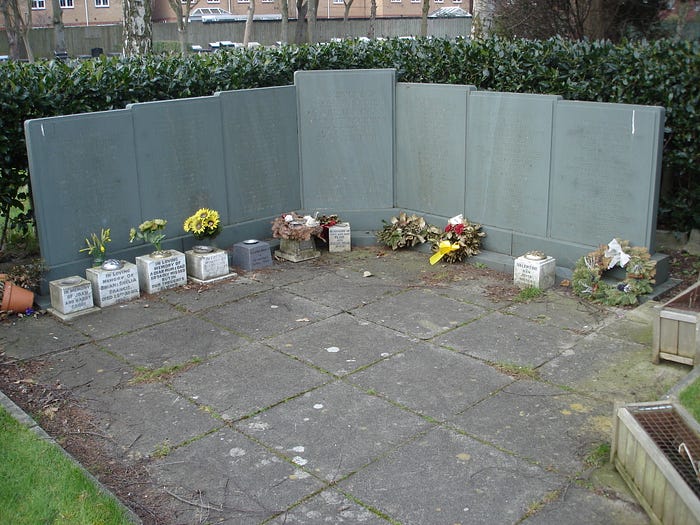
It would be some years yet before enough of these poorly-equipped European airports received modern radar to stop the bloodshed. Spain in particular continued to suffer numerous preventable disasters throughout the 1980s, including two more flights that flew into terrain and another runway collision. However, by the end of the 1990s, the situation had largely been rectified. The Spanish and Portuguese Atlantic islands (and their French, Italian, and Greek counterparts in the Mediterranean) haven’t claimed any more lives since 1999, thanks in no small part to a European-wide effort to install radar at all major airports. And today, the approach to runway 12 at Tenerife North has been greatly simplified: instead of overflying the airport and then backtracking, incoming planes turn west at TFN instead, then make a simple turn to the left to line up with the runway. This ensures that planes stay far away from terrain at all times. On top of this, most international traffic now flies to Tenerife South Airport, which opened 18 months before the Dan-Air crash and is in a much less dangerous location.
Dan-Air flight 1008 was the last fatal accident at Tenerife North Airport, ending the streak of tragedies that had turned the word Tenerife into something pilots dared only to whisper, not say out loud. It was also the last fatal crash for Dan-Air, an airline which up until that point had a somewhat checkered safety record. But despite its status as the largest loss of life on a British airliner, flight 1008 is not well remembered today: it is simply yet another crash on the Atlantic islands, another victim of the curse of Tenerife.
_______________________________________________________________
Join the discussion of this article on Reddit!
Visit r/admiralcloudberg to read over 180 similar articles.
You can also support me on Patreon.
